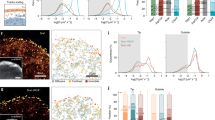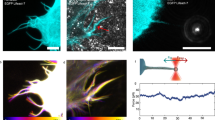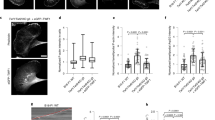Abstract
REGULATION of cytoskeletal structure and motility by extracellular signals is essential for all directed forms of cell movement and underlies the developmental process of axonal guidance in neuronal growth cones. Interaction with polycationic microbeads can trigger morphogenic changes in neurons and muscle cells normally associated with formation of pre- and postsynaptic specializations1,2. Furthermore, when various types of microscopic particles are applied to the lamellar surface of a neuronal growth cone or motile cell they often exhibit retrograde movement at rates of 1–6 µ min−1 (refs 3–6). There is strong evidence that this form of particle movement results from translocation of membrane proteins associated with cortical F-actin networks, not from bulk retrograde lipid flow4,5,7 and may be a mechanism behind processes such as cell locomotion, growth cone migration and capping of cell-surface antigens6,8,9. Here we report a new form of motility stimulated by polycationic bead interactions with the growth-cone membrane surface. Bead binding rapidly induces intracellular actin filament assembly, coincident with a production of force sufficient to drive bead movements. These extracellular bead movements resemble intracellular movements of bacterial parasites known to redirect host cell F-actin assembly for propulsion. Our results suggest that site-directed actin filament assembly may be a widespread cellular mechanism for generating force at membrane–cytoskeletal interfaces.
This is a preview of subscription content, access via your institution
Access options
Subscribe to this journal
Receive 51 print issues and online access
$199.00 per year
only $3.90 per issue
Buy this article
- Purchase on Springer Link
- Instant access to full article PDF
Prices may be subject to local taxes which are calculated during checkout
Similar content being viewed by others
References
Peng, H. B., Cheng, P. & Luther, P. W. Nature 292, 831–834 (1981).
Peng, H. B., Markey, D. R., Muhlach, W. L. & Pollack, E. D. Synapse 1, 10–19 (1987).
Bray, D. Proc. natn. Acad. Sci. U.S.A. 65, 905–910 (1970).
Forscher, P. & Smith, S. J. Optical Microscopy for Biology 459–471 (Wiley-Liss, New York, 1990).
Sheetz, M. P., Turney, S., Qian, H. & Elson, E. L. Nature 340, 284–288 (1989).
Bray, D. & White, J. G. Science 239, 883–888 (1988).
Lee, J., Gustafsson, M., Magnusson, K. & Jacobson, K. Science 247, 1229–1233 (1990).
Mitchison, T. J. & Kirschner, M. Neuron 1, 761–772 (1988).
Smith, S. J. Science 242, 708–715 (1988).
Dabiri, G. A., Sanger, J. M., Portnoy, D. A. & Southwick, F. S. Proc. natn. Acad. Sci. U.S.A. 87, 6068–6072 (1990).
Tilney, L. G., Connelly, P. S. & Portnoy, D. A. J. Cell Biol. 111, 2979–2988 (1990).
Forscher, P. & Smith, S. J. J. Neurosci. 7, 3600–3611 (1987).
Forscher, P. & Smith, S. J. J. Cell Biol. 107, 1505–1516 (1988).
Author information
Authors and Affiliations
Rights and permissions
About this article
Cite this article
Forscher, P., Lin, C. & Thompson, C. Novel form of growth cone motility involving site-directed actin filament assembly. Nature 357, 515–518 (1992). https://doi.org/10.1038/357515a0
Received:
Accepted:
Issue Date:
DOI: https://doi.org/10.1038/357515a0
This article is cited by
-
Assembly of a new growth cone after axotomy: the precursor to axon regeneration
Nature Reviews Neuroscience (2012)
-
Kinesin-dependent movement on microtubules precedes actin-based motility of vaccinia virus
Nature Cell Biology (2001)
-
Microsphere attachment induces glycoprotein redistribution and transmembrane signaling in theChlamydomonas flagellum
Protoplasma (1998)
-
Beads, bacteria and actin
Nature (1992)
-
Actin in cell attachment
Nature (1992)
Comments
By submitting a comment you agree to abide by our Terms and Community Guidelines. If you find something abusive or that does not comply with our terms or guidelines please flag it as inappropriate.



